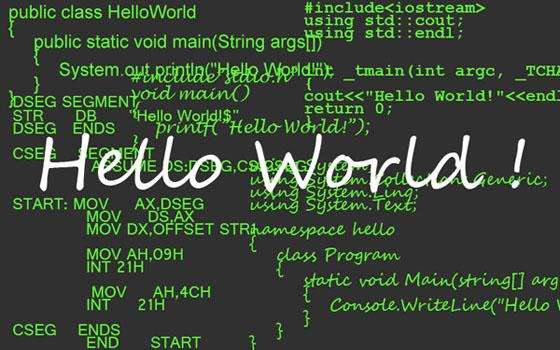盘点Python 中字符串的常用操作
摘要:盘点 Python 中字符串的几个常用操作,对新手极度的友好。
本文分享自华为云社区《盘点 Python 中字符串的常用操作,对新手极度友好》,作者:TT-千叶 。
在 Python 中字符串的表达方式有四种
一对单引号
一对双引号
一对三个单引号
一对三个双引号
a = ‘abc’
b= “abc”
c = ‘’‘abc’’’
d = “”“abc”””
print(type(a)) # <class ‘str’>
print(type(b)) # <class ‘str’>
print(type©) # <class ‘str’>
print(type(d)) # <class ‘str’>
单双引号混合使用
a = “LiMing say ‘nice to meet you’”
同样也可以通过转义的方式不用在里面写双引号
a = “LiMing say “nice to meet you””
print(a)
总结就是需要外面用了双引号,里面需要引用的语句可以用单引号括起来,反之亦然。
通常情况根据个人喜好,基本都是使用单引号或者双引号。有些特殊情况,比如需要表示多行时,可以选择三个单(双)引号,并且无序用 进行转移,可直接使用单引号和双引号。
a = ‘’’
My Name is 阿亮,
Let’s say ‘Hello’
‘’’
print(a)
字符串的下标和切换
下标:字符串是一个个字符拼接而成,下标可以理解为每个字符的编号,从 0 开始依次类推。
作用:通过下标去操作字符串中的元素
H的下标为0, e的下标为1 …依次类推
a = ‘HelloWorld’
获取字符串a中下标为4的元素
print(a[4]) # o 下标为4的元素为o
修改字符串中的元素是不是可以直接赋值呢? 例如:
a = ‘HelloWorld’
a[4] = ‘k’
print(a)
上面的代码运行之后发现报错。
TypeError: ‘str’ object does not support item assignment
原因是因为: 字符串一旦创建之后,里面的元素是不可以修改的。
所以字符串是无法直接进行修改的。
字符串运算
字符串运算中用到了 + 、*、>、<、!= 、= 等逻辑运算符。
字符串的相加操作,也可以理解为拼接操作。例如:
a = ‘Hello’ + ’ World’
print(a) # Hello World
也可以写成
a = ‘Hello’ ’ World’
print(a) # Hello World
字符串的乘法操作,可以理解为克隆操作,字符串只能与整数(n)想乘,代表克隆 n 个字符串。
a = ‘a’
print(a * 2) # aa
b = ‘-’
print(b * 10) # ———-
切片
字符串的切片也称为字符串截取。 所有操作都是通过字符串的下标进行操作的。
用法:字符串 [开始索引(start):结束索引(end):步长(step)(默认 1)]
步长(step):每隔(step-1)个取一个元素,当 step 为负数时,代表从右向左取元素,
a = ‘abcdefghijklmn’
从下标1开始 到4结束 进行切片 (包括1,不包括4,即左开又闭)
print(a[1:4]) # bcd
print(a[1:8]) # bcdefgh
print(a[1:8:2])# 步长为2, 结果:bdfh
当补偿为负数时,代表逆向截取。 初始从坐标8开始,每隔一个元素取一个值,到下标为1时结束
print(a[8:1:-2]) # igec
字符串的常用操作
这里以代码 + 注释的方式,展示几个常用的字符串操作。
a = ’ Hello World ’
获取字符串的长度
print(len(a)) # 13
删除字符串两边的空格
print(a.strip()) # Hello World
删除左边的空格
print(a.lstrip()) # Hello World (只删除左边的空格)
删除字符串右边的空格
print(a.rstrip()) # Hello World
通过指定连接符 链接字符串
lst = [‘LiMing’, ‘Tom’]
print(’***’.join(lst)) # LiMing***Tom
首字母大写
m = ‘hello world’
print(m.capitalize()) # Hello world
返回标题化字符串,即每个单词首字母大写
print(m.title()) # Hello World
打印输出字符,将字符串放在中间,
center(width, fillchar) width: 字符串的总长度, fillchar:填充字符
print(a.center(20, ‘*’)) # *** Hello World ****
是否以xxx开头
n = ‘Hello’
print(n.startswith(‘H’)) # True
是否以xxx结尾
print(n.endswith(‘o’)) # True
字符串是全纯英文字符
print(a.isalpha()) # False , 因为字符串a中 ’ Hello World ’ 有空格,因此返回False
print(‘HelloWorld’.isalpha()) #True
判断字符串中是否全部为数字或者英文
print(‘Hello2World’.isalnum()) # True
print(‘123’.isalnum()) # True
print(‘abc&11’.isalnum()) # False
判断是否为整数
print(‘123’.isdigit()) # True
print(‘1.23’.isdigit()) # False
判断字符是否全为小写
print(‘abc’.islower()) # True
判断字符是否全为大写
print(‘Abc’.isupper()) # False
print(‘ABC’.isupper()) # True
字符串小写转大写
print(‘abc’.upper()) # ABC
字符串大写转小写
print(‘ABC’.lower()) # abc
字符串的替换
b = ‘aabbcc’.replace(‘a’, ‘m’)
print(b) # mmbbcc
1 代表替换的个数
b = ‘aabbcc’.replace(‘a’, ‘m’, 1)
print(b) # mabbcc
split 字符串切割,默认空格切割
print(‘aa bb cc’.split()) # [‘aa’, ‘bb’, ‘cc’]
print(‘ab,cd,ef’.split(’,’)) # [‘ab’, ‘cd’, ‘ef’]
字符串换行分割
a = “””
My Name is ‘762459510,
欢迎添加
“””
print(a.splitlines()) # [’’, ” My Name is ‘762459510’,”, ’ 欢迎添加’, ’ “]
字符串的查找
字符串查找常用的方法用 index、find
两者功能相似,区别在于 find 查找不到元素时返回 -1, 不会影响程序运行,而 index 则会抛出异常。
a = ‘abcdef’
查找到元素返回对应的下标
print(a.find(‘c’)) # 2
print(a.find(‘h’)) # -1
print(a.index(‘c’)) # 2
print(a.index(‘h’)) # 抛出异常,ValueError: substring not found
rfind: 类似于 find () 函数,不过是从右边开始查找;返回字符串最后一次出现的位置,如果没有匹配项则返回 – 1 。rindex 同理
a = ‘acmncd’
从右边开始计算,返回第一个匹配到的下标
print(a.rfind(‘c’)) # 4
print(a.rindex(‘c’)) # 4
字符串的格式化
name = ‘762459510’
%s 用于输出字符串
print(‘我的月球号是: %s’ % name)
age = 18
%d 用于输出十进制数字
print(‘我的年龄是:%d’ % age)
money = 1.23
%f 浮点数,默认显示小数点后6位
print(‘我身上有:%f 元’ % money )
指定小数点后的位数
print(‘我身上有:%.2f 元’ % money )
format 操作
除了使用 % 进行格式化,也可以使用 format
print(’{} {}’.format(‘Hello’, ‘World’)) # Hello World
print(’{0} {1}’.format(‘Hello’, ‘World’)) # Hello World
print(’{1}, {0}, {1}’.format(‘A’, ‘B’)) #B, A, B
print(‘今年是 {}年.’.format(2022)) # 今年是 2022年.
点击关注,第一时间了解华为云新鲜技术~


